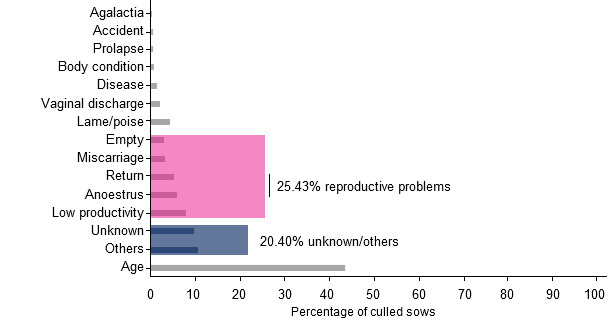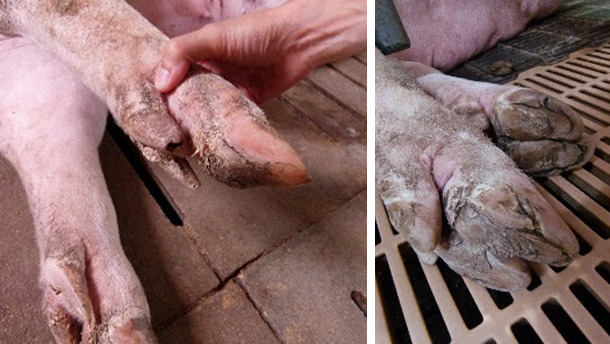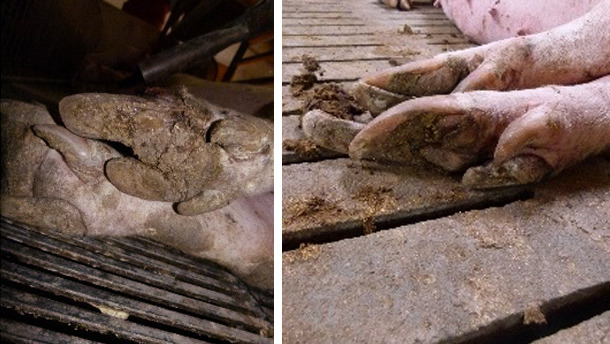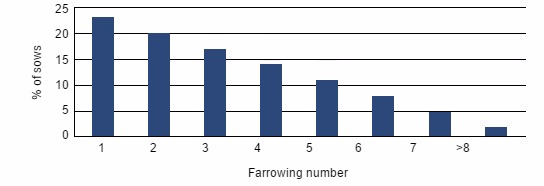On previous occasions, we discussed in this section the prevalence of lameness on farms, its classification and original causes, and to what extent it may affect production data under the heading "lameness" as the registered reason for the removal of sows. This effect is clear and has been repeatedly demonstrated (Anil et al. 2009; Ehlorsson et al. 2009; Pluym et al. 2013).
But... what about data from production losses of one kind or another classified as "unknown", "other" or some vague names such as "reproductive problems"?

- What happens to the sows sent to slaughter because of these reasons? What is their real origin?
- What are unspecific reproductive losses such as irregular returns, weak heat cycles in gilts, etc. all about?
Most of the time the farmer, which is the person diagnosing the reasons and recording them when sending the sow for slaughter, is unable to clearly identify the source of the problem, which results in a large number of different types of unspecific records from which it is impossible to draw any useful information for the production manager.
The database available to us (over 330,000 white sows) contains many, even too many, unspecific causes listed as the reason for selling sows for slaughter.

Figure 1. Percentages of the different causes for sending sows to slaughter, 2015.
As shown in Figure 1, age accounts for almost half of reasons to slaughter a sow, the other 55% not being related to it. For example, in 2015 the reason listed for sending almost 68,000 sows to slaughter —more than 20% of the sow census—, was "other" or "unknown". More than 25% of sows are slaughtered due to more or less specific reproductive reasons, such as "low productivity", "lack of heat", "found empty at farrowing", "weak heat" and so on.
Apparently, lameness problems amount to just 5% of the causes for sending pigs to slaughter.
Lameness are usually diagnosed when healing is unlikely; as a general rule, the sow is already recumbent, not eating, has miscarried, or its gait is greatly affected. However, virtually no farm routinely examines sows with hoof injuries or a slightly abnormal gait, let alone sows that show none of these problems.
For the last 10 months, we have visited different farms —where lameness problems were or were not suspected—, objectively collecting data on the incidence of hoof injuries in order to draw a map of the real situation in our country, and finally link these data to the records available of shippings to slaughter due non-specific causes (more than 30,000 per year).
This article describes the first trends extracted from the data of the first 550 sows investigated, data related not yet linked to reproductive data.
Methodology for data collection is numerical, in order to avoid subjectivity as much as possible. To unify the criterion, the same person is responsible for training veterinarians on line and making the first assessments with them. Subsequently, these veterinarians send data from their farms to add to the database.
All the lesions are captured in a closed form, and rated from grade 1 to grade 3. If the sow does not have any injuries, an injury is recorded with no value.


The revised injuries are:
- Heel overgrowth and erosion
- Sole/Heel crack
- White Line
- Horizontal wall crack
- Vertical wall crack
- Overgrowth of the major digits
- Overgrowth of the secondary digits

Other data captured for the sows are: farrowing number, physiological state (lactation, nulliparous, pregnant...), location and additional remarks such as: does not eat, bad farrowing... or any other significant incident.
10% of sows are reviewed on each farm, whether hoof lesions are suspected or not. Recording is completely random and always distributed according to the existent census structure: i.e., if there the holding has a 23% of gilts, 23% of the sows inspected will be on their first farrowing (Figure 2), but randomly selected.

Figure 2. Ideal census in a farm.


